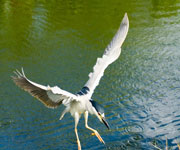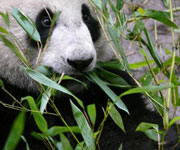Everglades National Park Heritage
This site at the southern tip of Florida has been called 'a river of grass flowing imperceptibly from the hinterland into the sea'. The exceptional variety of its water habitats has made it a sanctuary for a large number of birds and reptiles, as well as for threatened species such as the manatee. Everglades National Park is the largest designated sub-tropical wilderness reserve on the North American continent. Its juncture at the interface of temperate and sub-tropical America, fresh and brackish water, shallow bays and deeper coastal waters creates a complex of habitats supporting a high diversity of flora and fauna. It contains the largest mangrove ecosystem in the Western Hemisphere, the largest continuous stand of saw grass prairie and the most significant breeding ground for wading birds in North America.

Continent: North America
Country: United States
Category: Listed Danger
Criterion: (VIII)(IX) (X)
Date of Inscription: 1979
Complex biological processes
The Everglades contains vast subtropical wetlands and coastal/marine ecosystems including freshwater marshes, tropical hardwood hammocks, pine rocklands, extensive mangrove forests, saltwater marshes, and seagrass ecosystems important to commercial and recreational fisheries. Complex biological processes range from basic algal associations through progressively higher species and ultimately to primary predators such as the alligator, crocodile, and Florida panther; the food chain is superbly evident and unbroken. The mixture of subtropical and temperate wildlife species is found nowhere else in the United States.
 |
| The bird is going for prey |


